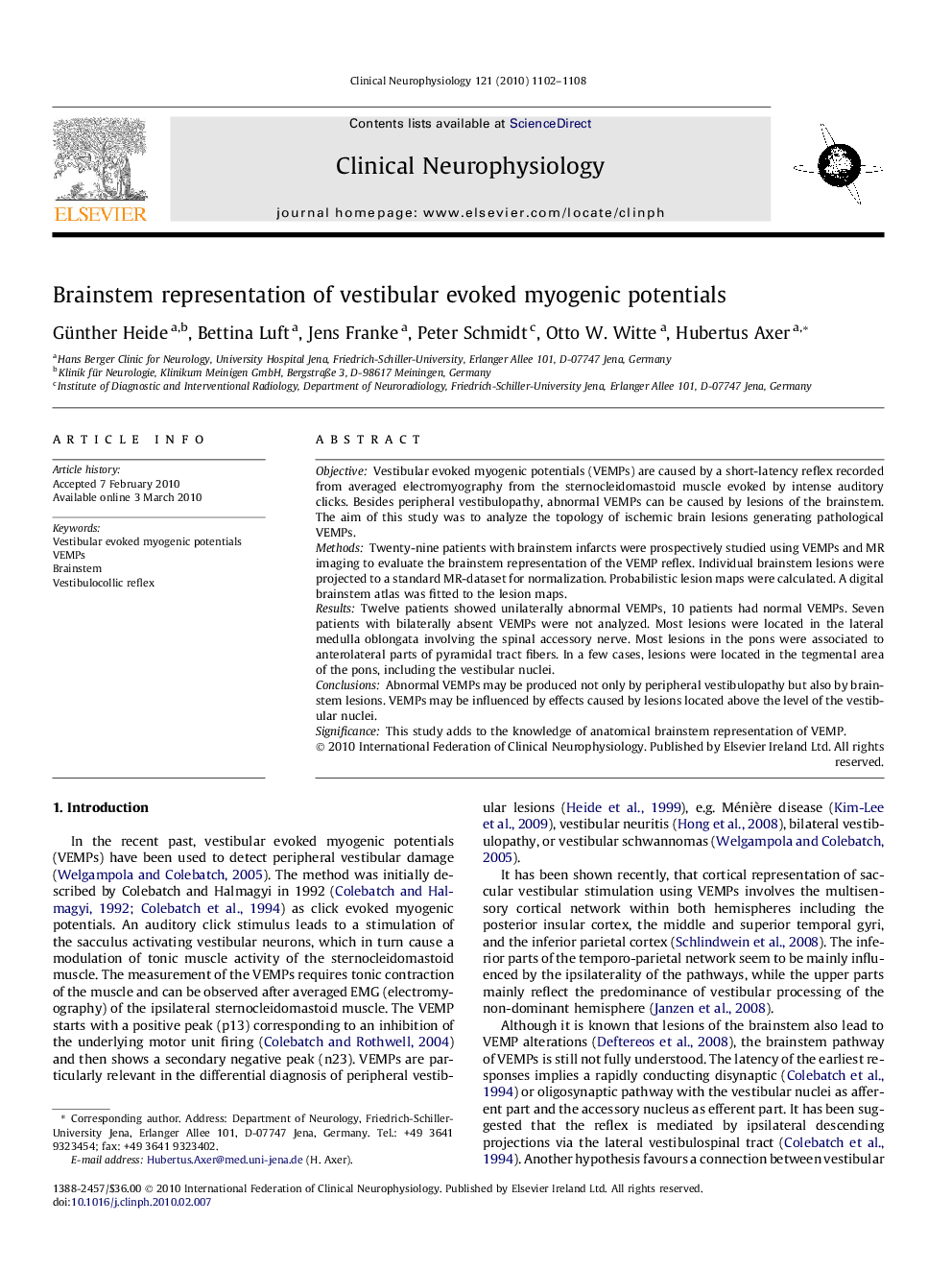| Article ID | Journal | Published Year | Pages | File Type |
|---|---|---|---|---|
| 3045935 | Clinical Neurophysiology | 2010 | 7 Pages |
ObjectiveVestibular evoked myogenic potentials (VEMPs) are caused by a short-latency reflex recorded from averaged electromyography from the sternocleidomastoid muscle evoked by intense auditory clicks. Besides peripheral vestibulopathy, abnormal VEMPs can be caused by lesions of the brainstem. The aim of this study was to analyze the topology of ischemic brain lesions generating pathological VEMPs.MethodsTwenty-nine patients with brainstem infarcts were prospectively studied using VEMPs and MR imaging to evaluate the brainstem representation of the VEMP reflex. Individual brainstem lesions were projected to a standard MR-dataset for normalization. Probabilistic lesion maps were calculated. A digital brainstem atlas was fitted to the lesion maps.ResultsTwelve patients showed unilaterally abnormal VEMPs, 10 patients had normal VEMPs. Seven patients with bilaterally absent VEMPs were not analyzed. Most lesions were located in the lateral medulla oblongata involving the spinal accessory nerve. Most lesions in the pons were associated to anterolateral parts of pyramidal tract fibers. In a few cases, lesions were located in the tegmental area of the pons, including the vestibular nuclei.ConclusionsAbnormal VEMPs may be produced not only by peripheral vestibulopathy but also by brainstem lesions. VEMPs may be influenced by effects caused by lesions located above the level of the vestibular nuclei.SignificanceThis study adds to the knowledge of anatomical brainstem representation of VEMP.
